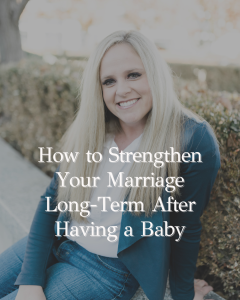
Why do you react the way you do in sexual situations, whether it’s craving something specific, avoiding certain dynamics, or feeling stuck in the same patterns? And why does your partner seem to approach sex so differently? In this episode, we explore how the Enneagram can shed light on your unique relationship to intimacy. The Enneagram isn’t just another personality test – it’s a deep dive into the core fears, desires, and motivations that shape how we show up in the world, including in our sex lives. Each of the nine types brings its own emotional lens to relationships, and when you begin to recognize those patterns in yourself and your partner, things start to make a lot more sense. This episode isn’t about putting you in a box. It’s about offering a new perspective – one that can help you grow in self-awareness, communicate more clearly, and build a more connected and compassionate intimate life.
Enneagram Books:
The Road Back To You – a basic primer on the enneagram and the types
The Path Between Us – about how each type in relationship
The Wisdom of the Enneagram – an indepth look at enneagram and each type
Sex and the Enneagram – A Guide to Passionate Relationships for the 9 personality types
Show Summary:
Have you ever wondered why you respond the way you do to sexual experiences—why you crave certain things, avoid others, or find yourself stuck in patterns that feel hard to explain? Or maybe you’ve been confused by your partner’s approach to sex—why they shut down, why they crave novelty, why they seem to need more (or less) than you do. One of my favorite tools for exploring these questions is the Enneagram.
The Enneagram is a personality framework that helps people understand themselves and others on a deep, emotional level. It’s based on the idea that there are nine core types of motivation, and each of us tends to operate primarily from one of those types. But unlike many personality systems that just focus on behaviors, the Enneagram goes deeper—it looks at the underlying fears, desires, and internal narratives that shape our worldview, our relationships, and even our sexual expression.
At its core, the Enneagram isn’t about labeling or boxing people in. It’s a map—a dynamic tool for growth that shows us not only who we are when we’re functioning well, but also who we become when we’re stressed, reactive, or disconnected from ourselves. Each type has patterns of thinking, feeling, and behaving that are driven by a core fear and a core desire. And once you start to see those patterns in yourself and your partner, it becomes much easier to understand why certain issues come up—especially around sex and intimacy.
The symbol itself—a nine-pointed figure inside a circle—represents the way the types relate to each other. It’s not linear; it’s interconnected. You’re not just one number. You have a primary type, but you also have a “wing” (the number next to yours that adds flavor to your personality), and “stress” and “growth” lines that show how you behave under pressure or when you’re thriving.
In a marriage, the Enneagram gives language to things we often feel but can’t articulate. Why you shut down when your spouse criticizes you. Why you need affirmation after sex. Why your partner withdraws during conflict. It brings clarity to your emotional habits and compassion to your partner’s, so you can start to move out of blame and into curiosity. In my work with clients and couples, I’ve found it to be an incredibly helpful way of understanding not just how we behave, but why—especially in something as intimate and emotionally charged as sex.
Each of the nine types has a dominant lens through which they experience life, and that lens shapes how they relate to their own sexuality and to their partner. And it’s not about putting people in boxes—it’s about illuminating the box they might already be in, and giving them tools to grow beyond it. When couples begin to understand their Enneagram types, it often unlocks a new level of compassion for themselves and each other. They begin to see that the frustration they feel in the bedroom isn’t always personal—it’s often a story that was written long before they ever met.
Let’s walk through each of the types, and I’ll share both some general characteristics and how those traits might show up in a sexual relationship—for both men and women. As you listen, try to identify yourself and your partner—but hold it loosely. The goal isn’t to diagnose. It’s to get curious.
Type One – The Reformer
Type Ones have a deep inner drive to be good, to do the right thing, and to improve themselves and the world. They often carry a strong inner critic and can struggle with letting go of control. Sex can be complicated for Ones because it may feel indulgent or “messy”—not in line with their ideals of order or morality.
A Type One woman might delay sex until everything else in life is done—kids are asleep, the house is clean, and she feels like she’s earned it. Even then, her mind might stay in task-mode, making it hard to fully enjoy the experience. A Type One man might be more focused on doing sex “right”—pleasing his wife, lasting a long time, being respectful—but may secretly carry shame about spontaneous desire or arousal.
Growth for Ones often looks like creating a space where pleasure is allowed to be imperfect. Sex becomes an opportunity to release that inner critic and enjoy something for the joy of it—not because it checks a box or meets a standard.
Type Two – The Helper
Twos are generous, loving, and focused on meeting the needs of others. They feel most secure when they’re appreciated, and often struggle to express their own needs—especially sexually.
A Type Two woman might initiate sex by tending to her husband’s needs—back rubs, sweet gestures, or checking in emotionally—hoping it leads to connection, but never directly asking for what she wants. She may feel resentful when it doesn’t go the way she hoped. A Type Two man might be very attentive to his wife’s pleasure but not know how to express his own desire without feeling selfish.
Growth for Twos involves learning to express desire without guilt. It’s giving themselves permission to want something—not as a reward for being good, but because they are worthy of receiving. When a Two learns to say, “I’d really love for you to touch me here,” or “I want you to pursue me tonight,” it can be a powerful moment of self-trust and mutual intimacy.
Type Three – The Achiever
Threes are driven, image-conscious, and deeply motivated by success and external validation. For many Threes, sex is tied to performance—looking good, doing it well, and getting approval.
A Type Three woman might tie her sexual confidence to her appearance. If she doesn’t feel attractive that day, she might shut down sexually—not because she doesn’t want sex, but because she fears being seen as “less than.” A Type Three man might link his worth to sexual performance—whether he can “wow” his wife, initiate successfully, or create a “perfect” encounter.
For Threes, growth looks like letting go of the need to be impressive and choosing to be real instead. Sex becomes less about winning or achieving and more about being present, playful, and emotionally available. The greatest gift for a Three is hearing, “I want you even when you’re not at your best.”
Type Four – The Individualist
Fours are emotionally rich, introspective, and sensitive. They crave deep connection and are often drawn to intensity and beauty. Sex is never just physical for a Four—it’s poetic, symbolic, and deeply entwined with meaning.
A Type Four woman may long for sex that feels emotionally resonant—but if she’s in a lower place emotionally, she might push her spouse away, convinced that they’ll never truly understand her. A Type Four man may crave profound connection but struggle to initiate if the moment doesn’t feel “just right.” If the vibe feels off, he might retreat and wait—sometimes for days—hoping the emotional atmosphere will shift.
Growth for Fours involves letting sex be less about perfect emotional alignment and more about shared experience. They thrive when they can bring creativity, expression, and vulnerability into the bedroom—without needing everything to feel epic.
Type Five – The Investigator
Fives are thoughtful, analytical, and deeply protective of their energy. They tend to approach life—and sex—with a desire to understand before they engage. They’re often more private and reserved, needing time to warm up and feel safe.
A Type Five woman may need a lot of personal space and might not prioritize physical affection unless it’s on her terms. She may crave intellectual connection before sexual touch. A Type Five man might be deeply curious about sex—reading, researching, even fantasizing—but hesitant to act, especially if it feels emotionally risky.
Fives often do best when sex is predictable in a positive way—not spontaneous or high-pressure, but mutually initiated with plenty of space to say yes or no without guilt. Their growth path involves learning that sexual energy can be regenerative, not just depleting—and that they can trust their partner to handle their full presence.
Type Six – The Loyalist
Sixes are loyal, anxious, and motivated by safety and support. They long to know that their partner is with them and for them. In sex, they often need a strong foundation of emotional trust to feel free.
A Type Six woman might become sexually avoidant during times of emotional distance, worrying that sex will feel fake or obligatory. A Type Six man might crave reassurance that he’s wanted and doing it “right,” but have a hard time asking directly—so he’ll test, hint, or withdraw.
For Sixes, emotional safety is the gateway to sexual openness. They thrive on consistency, check-ins, and post-sex connection. Growth means learning to ground themselves internally so that their partner doesn’t always have to “prove” their love—but also trusting that asking for what they need is safe.
Type Seven – The Enthusiast
Sevens are optimistic, playful, and driven by the pursuit of pleasure. They love novelty and can bring great energy to a sexual relationship. But they often struggle to stay present when things get uncomfortable, emotionally or physically.
A Type Seven woman might be full of exciting ideas—new lingerie, different locations, role play—but avoid slower or more emotionally intimate moments. A Type Seven man may love initiating new experiences but struggle to stay with his partner’s emotions if the mood turns serious or vulnerable.
Sex becomes transformative for a Seven when they learn to stay with what is—not just chase what’s next. Their growth comes when they stop avoiding discomfort and start embracing depth—when they realize that the richest pleasures often come on the other side of presence and stillness.
Type Eight – The Challenger
Eights are strong, assertive, and passionate. They don’t shy away from intensity and often bring a bold, commanding presence to sex. But underneath that strength is a tender desire to be known and loved without having to protect themselves.
A Type Eight woman might take charge in bed but feel deeply hesitant to let her partner lead, fearing that vulnerability equals weakness. A Type Eight man might initiate frequently and confidently but find it difficult to express emotional softness or admit to feeling hurt.
For Eights, sex becomes sacred when it becomes a space where they don’t have to be in control all the time. When they can let down their guard and trust that their partner sees—and loves—them fully. It’s not about taming their passion, but about integrating it with tenderness.
Type Nine – The Peacemaker
Nines are calm, accommodating, and conflict-avoidant. They often lose touch with their own desires and defer to their partner’s needs—especially in the bedroom.
A Type Nine woman might say yes to sex to keep the peace, even when she’s not fully engaged. Over time, this can lead to disconnection and resentment. A Type Nine man might avoid initiating because he’s afraid of rejection or rocking the boat—and then assume his partner just isn’t interested.
Growth for Nines looks like waking up to their own sexual desire—learning to take up space and express preferences. When a Nine learns to initiate, to say “this is what I want tonight,” or to ask for something specific—it’s not just empowering. It’s a turning point.
Understanding your Enneagram type—and your partner’s—isn’t just about decoding behaviors. It’s about understanding the inner world that drives them. When you realize that your partner’s withdrawal isn’t about you, but about their core fear of being overwhelmed… or that your own reluctance to initiate isn’t laziness, but a fear of doing it wrong… you can begin to shift the story.
You can also start to collaborate more intentionally. A Type Two and a Type Five will have very different sexual needs—but when they understand each other’s wiring, they can stop taking things personally and start crafting a sexual relationship that honors both people.
So much of what we experience in sex is not about sex—it’s about how we see ourselves, how we relate to need, how we deal with shame, fear, control, and longing. The Enneagram doesn’t solve everything, but it gives us a framework to see ourselves and each other more clearly. And that clarity is the first step to compassion, connection, and true transformation.
If you want to take this further, I’d encourage you and your spouse to each identify your type and begin talking about how it shows up sexually. What are your tendencies? Where do you get stuck? What helps you feel open and safe? What brings you alive? These questions open the door to a more conscious, compassionate, and connected sex life.
Because sex isn’t just something we do. It’s a reflection of who we are—and who we’re becoming.
To find your type I recommend taking the test on Truity.com. It will give you where you rank with each of the 9 numbers. Don’t take the top number as gospel truth. Take the top 3 or 4 numbers and read more about them to see if you can identify which one fits you best.
I will also put a list of my favorite Enneagram books in the show notes.
Enneagram Books
The Road Back To You – a basic primer on the enneagram and the types
The Path Between Us – about how each type in relationship
The Wisdom of the Enneagram – an indepth look at enneagram and each type
Sex and the Enneagram – A Guide to Passionate Relationships for the 9 personality types
Remember, love is a journey, not a destination. Stay committed, stay passionate, and stay connected. Goodbye for now.



